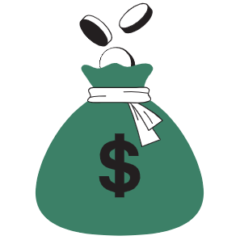You want to feel inflation? Try visiting a country like India every other year. I mean you are gone a while, but you only remember the prices of the past. Then you go there again and get price shocked everywhere you turn.
Inflation, an ever-present tax, is structural in most emerging economies. They import more than they export which creates a deficit. But that deficit seldom gets plugged. So, they print more currency to replace the currency that left the country and voila, inflation.
But never did I expect to feel the ravages of inflation in a supposedly efficient economy like that of the United States. I mean we went through bouts of it during the 1970s but not many are around to remember that. But now here we are, feeling what inflation feels like, firsthand.
Inflation is too much money chasing too few goods. That is it. Either we reduce the supply of money which means raise interest rates and in turn, reduce demand. Or we produce more goods.
But if producing goods were easy, we wouldn’t have such big of a mess. Take housing for example, a big component of inflation that feeds into the data the Bureau of Labor Statistics collects. There are not enough homes to go around, we all know that.
Yet, it is not like we can flip a switch and make shelter abundant. It takes time but, in the meanwhile, raising interest rates is the only weapon used to temper demand for shelter.
Raise interest rates so it costs more to buy so folks instead rent. But then rents shoot up so folks who’d be loving living alone are forced to double up. That new college grad of yours, ready to go out in the world, will be stuck at home a tad bit longer. Demand for shelter hence falls and with it, a big chunk of inflation.
Rising interest rates also raises the hurdle rate for businesses. Projects that were feasible when interest rates were low suddenly don’t pencil out. Projects get cut, jobs get lost. And without a job, you will not be buying as much stuff, reducing demand once again which lowers inflation.
Inflationary times can last much longer than expected. It is a big, big deal. Inflation is what author and investment advisor William Bernstein calls as one of the deep risks. It is not volatility, it is not temporary declines in asset values that you should fear. Those are what he quantifies as shallow risks. It is the long-term loss in purchasing power that you should fear much, much more.
Inflation most affects cash, bonds, and other fixed income investments so exposure to them beyond what is reasonable for your situation is going to kill. Instead, you need a big chunk of your portfolio devoted to fighting inflation. And stocks have historically proven to be the asset class of choice at doing just that.
And why not? Stocks represent business ownership and businesses do not just sit around and eat up the rising costs of their inputs. They will pass down those cost increases to you and me through price increases for the wares they sell. Not all businesses can. Those that cannot, wither away and get replaced by the more efficient ones.
But adjusting to rising prices takes time so in the short run, there will be pain, even for stocks.
With bonds, we become a lender to a business. Even if that business were to go on to become the next Microsoft, our share of the profits is capped at the interest rates negotiated when we purchased those bonds.
But in the event of a bankruptcy, payments to bondholders come first before the stockholders get anything. Plus, interest income from bonds is much more predictable than business profits. So, investing in bonds is supposed to be safer than investing in stocks and it shows up in the data.
Treasury bonds take longer to mature than treasury bills (cash like instruments with maturities of less than a year) but in both cases, when you buy them, you are lending money to the United States government. This can be used as a proxy for lending money to rock-solid businesses, but businesses carry a non-zero default risk so to get compensated for that extra risk, you will expect to earn more by lending money to businesses than governments.
The apparent safety of bonds and bills over stocks is clear from the data. Stocks sometimes tend to get cut in half. Bonds have had some negative years but not as many and not as extreme as stocks. Bills have been the safest with no declines at all.
But there is an immense cost associated with the perceived safety of bonds and bills over stocks.
Granted, nobody has a 100-year timeframe to invest but then maybe you do if your intent is to leave a legacy behind. The difference in outcome though is as stark as it can get.
And log scales tend to hide a lot of pain so do not be fooled by the apparently ‘small’ declines you see in the dollar amounts with stocks. Those declines are huge, sometimes to the tune of 50 percent, but you must live through them to deserve that eventual outcome.
And no, marketing timing will not help.
If you’re not willing to react with equanimity to a market price decline of 50 percent two or three times a century, you’re not fit to be a common shareholder.
Charlie Munger, vice chairman, Berkshire Hathaway
And stocks must return more than bonds and bills because stocks represent businesses while bonds and bills represent the cost of financing those businesses. Businesses won’t exist if over time, they don’t earn more than the underlying cost of financing so stocks outperforming bonds and bills makes perfect sense.
But if you think bonds and bills were safer than stocks, let me introduce to their common enemy, inflation.
Inflation-adjusted returns is what counts because that is your real growth in wealth.
The returns of bonds and bills are no longer as safe once inflation is taken into account. And that makes sense. You can’t be rewarded for sitting on cash. There is no free lunch anywhere, especially in investing.
So, your real purchasing power with treasury bills stayed flat, was up 5x with bonds and an incredible 472x with stocks. Stocks won.
That win of course didn’t come free. You’d have to wait, sometimes for decades to experience the magic of compound returns but wait you must.
Thank you for your time.
Cover image credit – Pixabay






